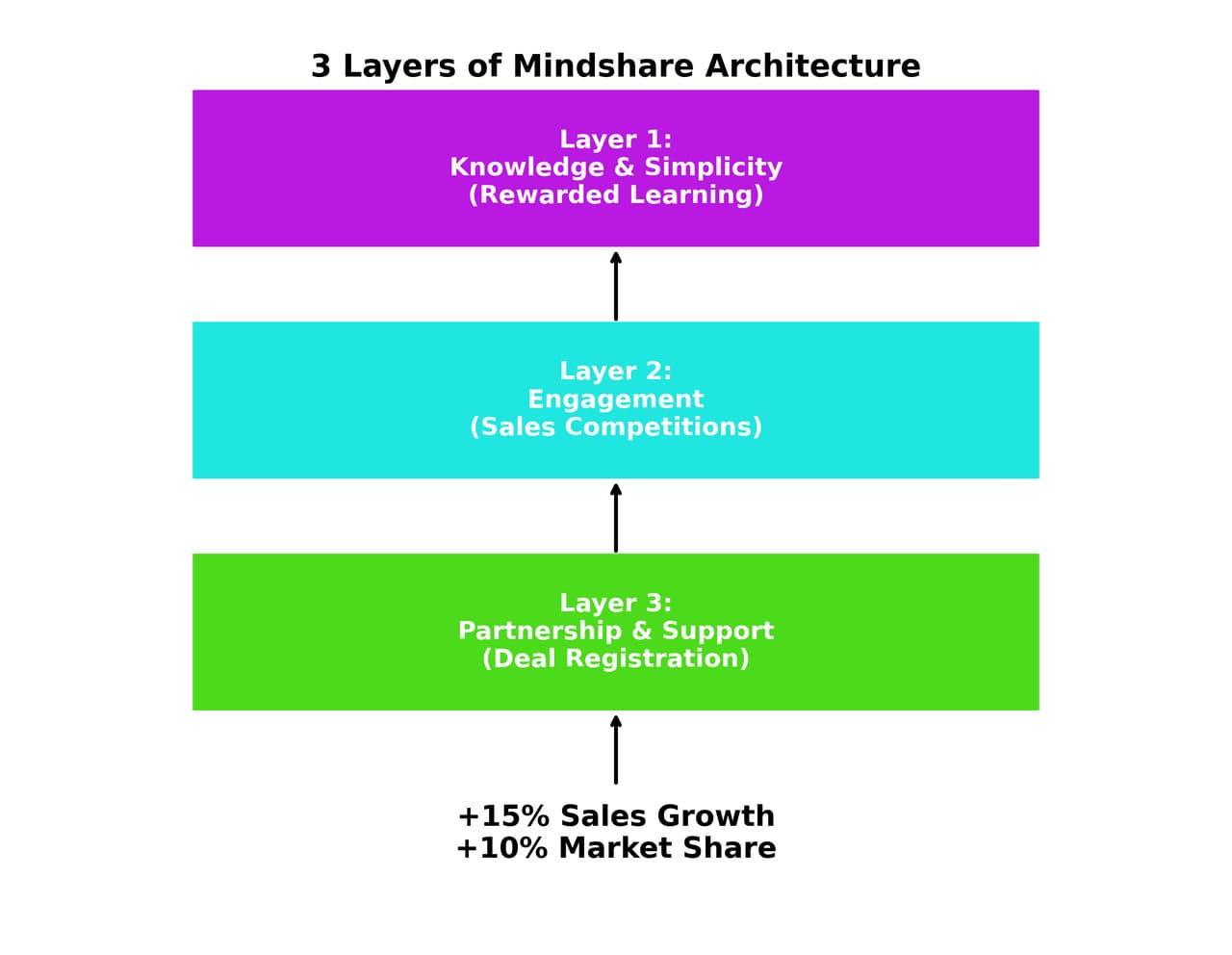From Mindshare to Market Share: A Systemic Approach to Winning Partner Attention in Northern Europe
- Introduction: The Finnish Context and the Partner Sales Paradox
- Diagnosis: Three Signs Your Product is Losing Mindshare
- The Solution: Architecting for Mindshare
- In Practice: A Mini-Case from the Finnish IT Sector
- KPIs for Tracking Mindshare
- Conclusion: A Strategic Lever for the C-Suite
1. Introduction: The Finnish Context and the Partner Sales Paradox
In the Finnish business culture, built on trust, transparency, and long-term relationships, partner loyalty is a key asset. Yet, even here, a paradox emerges: vendors invest in improving margins, but see no proportional growth in sales.
The problem is that in a crowded portfolio, partners sell what is simpler, clearer, and requires less effort. They choose based on “mindshare”—the space your brand occupies in their daily workflow. Research from Forrester shows that up to 70% of B2B purchase decisions are made before direct contact with a vendor, proving the critical importance of pre-formed loyalty and knowledge.
This paper presents a systemic approach to managing “mindshare,” transforming it from an abstract concept into a measurable driver of market share.
2. Diagnosis: Three Signs Your Product is Losing Mindshare
Before investing in a solution, an honest diagnosis is required. This checklist helps identify if your product is losing focus.
Checklist: Mindshare Audit
- Low Training Engagement: Partners are not completing certifications for your new products.
- Focus on Legacy Products: Sales teams default to older, simpler solutions, even when new ones are more profitable.
- Lack of Proactivity: Partners do not register large deals without constant reminders.
These issues are amplified in the Finnish cultural context, where salespeople value clarity, simplicity, and the minimization of unnecessary actions. If working with your product is too complex, they will intuitively choose an easier path.
3. The Solution: Architecting for Mindshare
Managing mindshare is not about pressure; it’s about creating an ecosystem where choosing you is the easiest and most logical decision. A platform like the AlbiCoins Partner Motivation Portal is the practical implementation of this architecture.
The 3 Layers of Mindshare Architecture
- Layer 1: The Foundation (Simplicity & Knowledge). Simplify and gamify training with a Rewarded Learning system.
- Layer 2: Engagement (Daily Motivation). Maintain interest with transparent, real-time Sales Competitions.
- Layer 3: Partnership (Strategic Value). Provide support on major opportunities through a Deal Registration system.

4. In Practice: A Mini-Case from the Finnish IT Sector
A Finnish IT distributor faced a challenge: despite high margins, sales of a new, complex software solution were flat. Sales teams defaulted to familiar, simpler products. After implementing a motivation system with gamified training and points for each new product demonstration, sales team engagement in promoting the new solution increased by 40% in the first quarter. This is a reconstructed example based on common market scenarios.
5. KPIs for Tracking Mindshare
| KPI Type | Example Metric |
|---|---|
| Leading Indicators | % of partners certified; Number of registered deals. |
| Lagging Indicators | Sales growth for new products (Target: +15%); Brand’s share of partner’s sales (Target: +10%). |
6. Conclusion: A Strategic Lever for the C-Suite
For Finnish businesses, predictability and trust are paramount. Managing mindshare is not about applying pressure, but about creating a system where the partner chooses you because it is simpler, more transparent, and ultimately more profitable. For a CEO or CCO, this is not a marketing tool, but a strategic lever for managing the entire partner network, with a direct impact on revenue and market resilience.
References:
- A Framework for B2B Channel Partner Motivation in the IT Industry (2019). Lappeenranta University of Technology, Finland.
- The role of relational capabilities in business-to-business ecosystems: A systematic literature review (2023). Journal of Business & Industrial Marketing.
- Managing cooperation and competition in a B2B partner ecosystem (2020). Industrial Marketing Management.
- Incentive-based training’s impact on channel partner sales performance (2021). Industrial Marketing Management.
- Antecedents of Channel Partner Perceived Relationship Value and Performance (2022). Haaga-Helia University of Applied Sciences, Finland.


